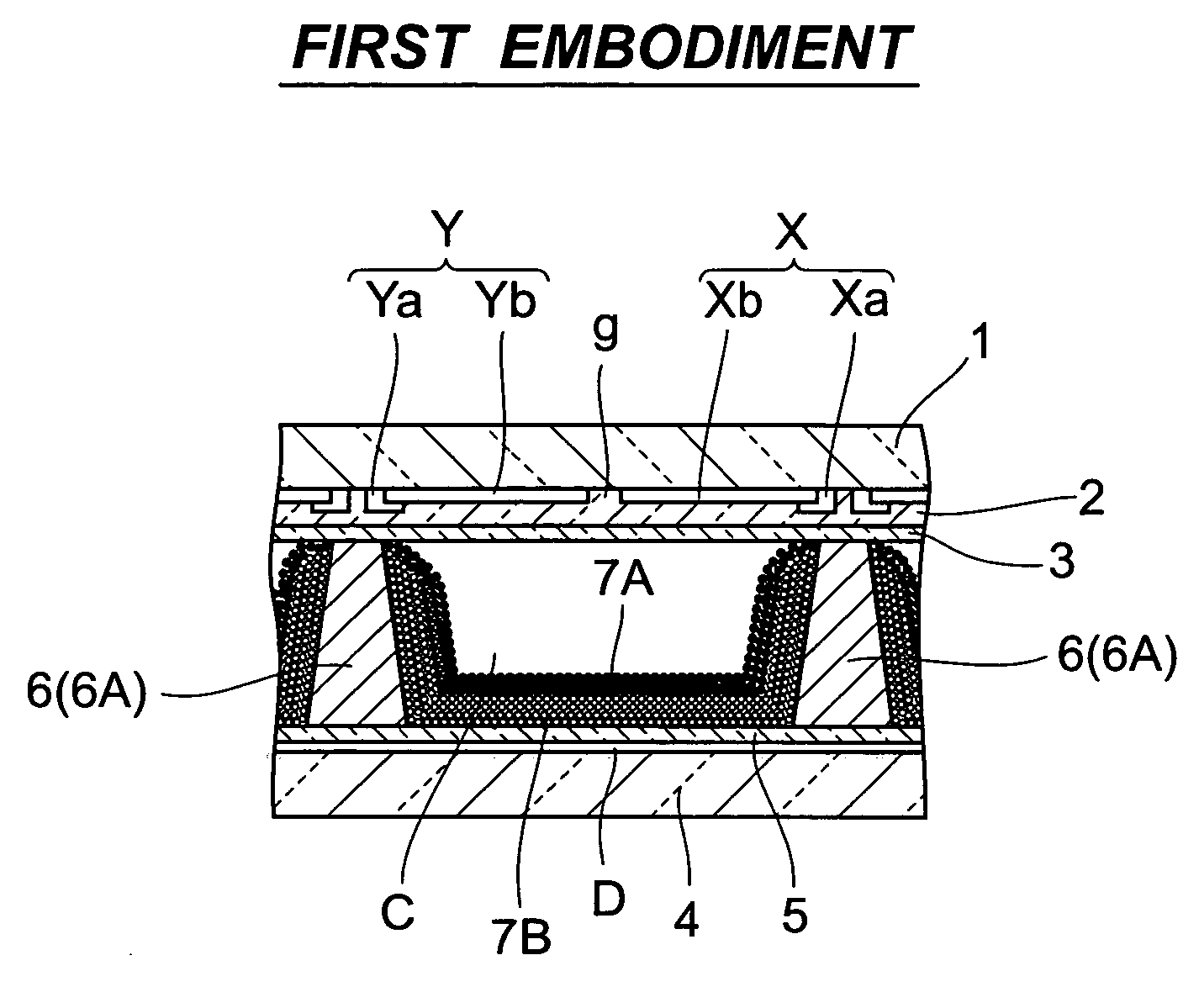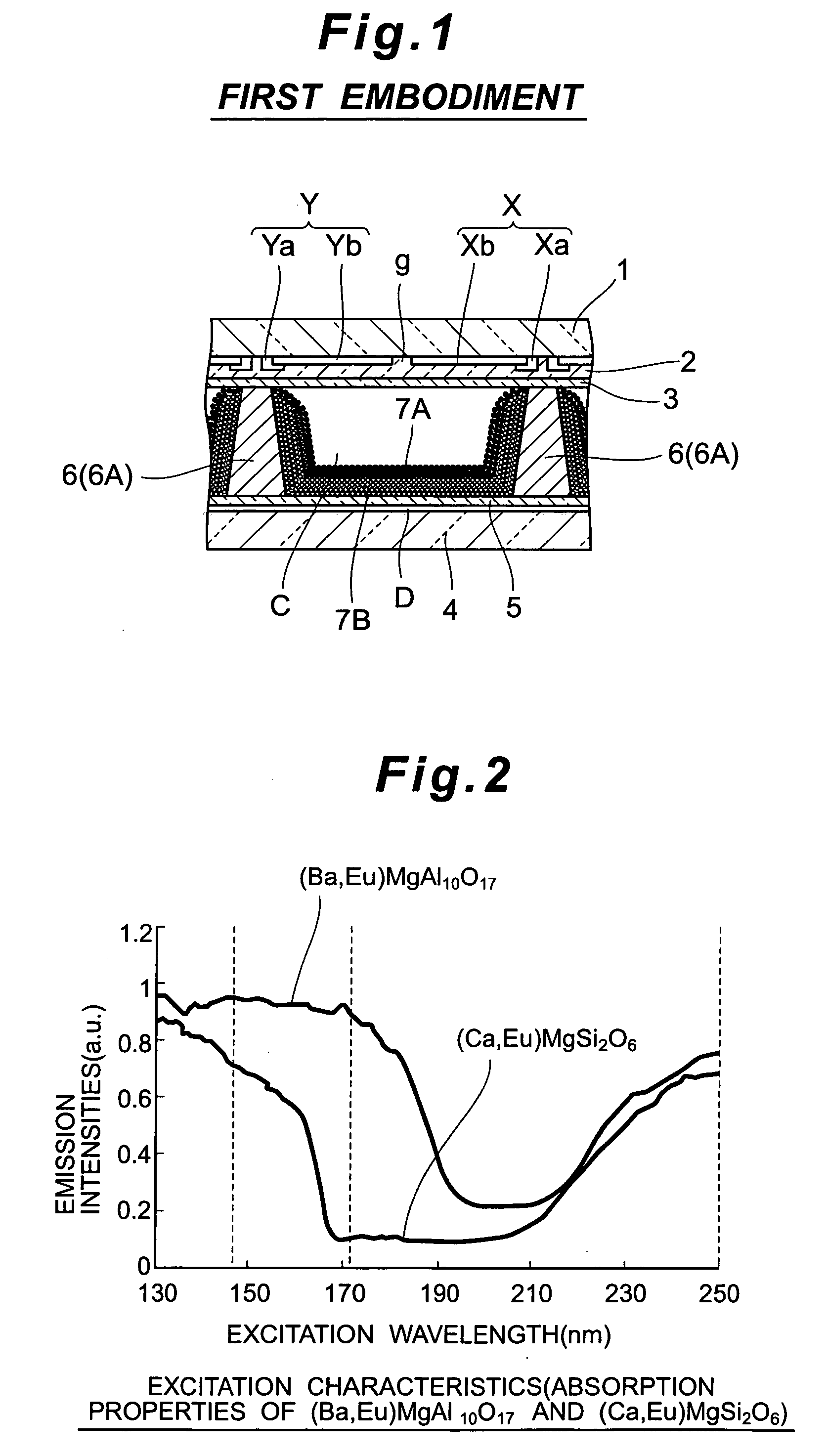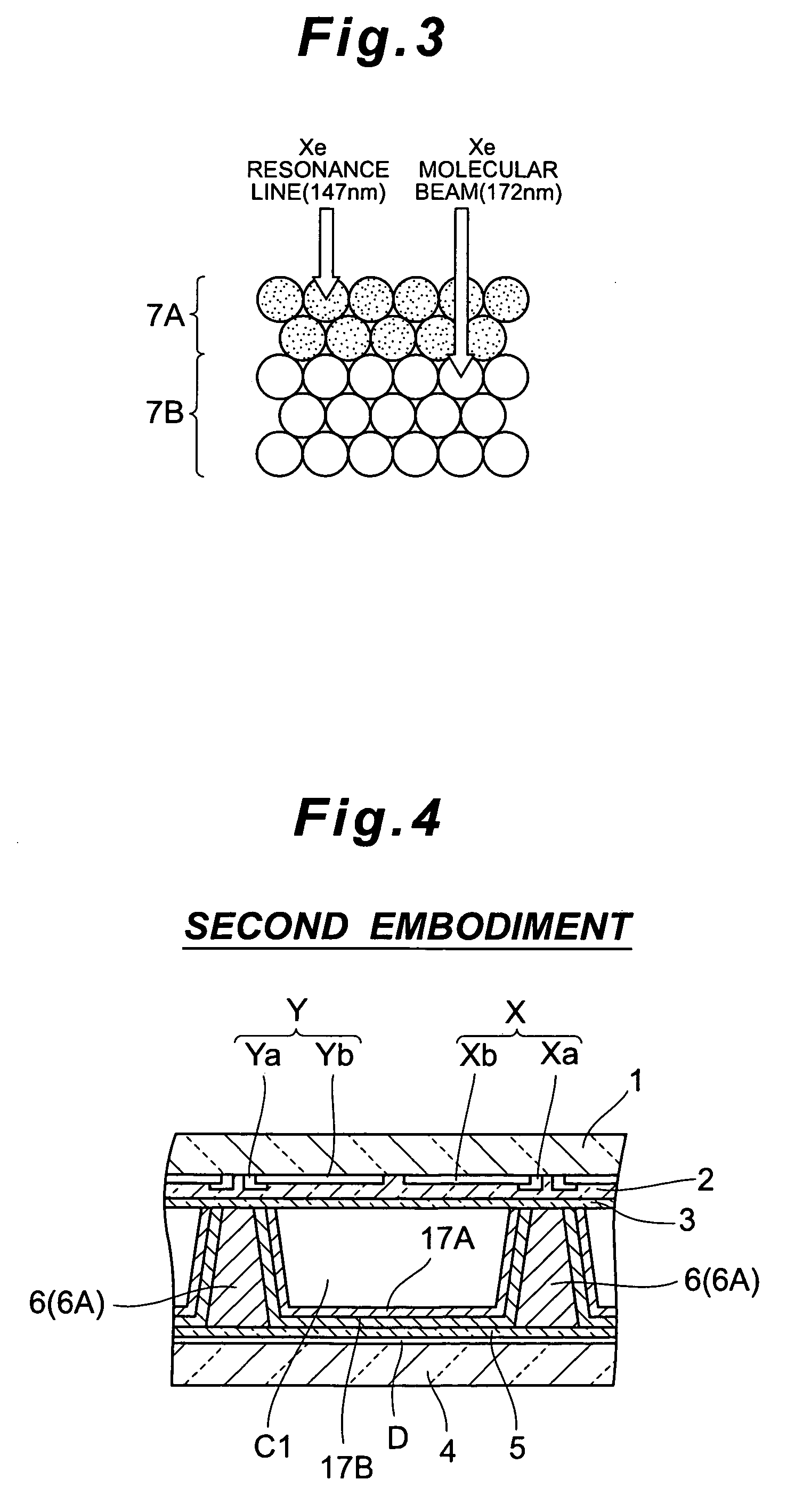Gas-discharge display apparatus
- Summary
- Abstract
- Description
- Claims
- Application Information
AI Technical Summary
Benefits of technology
Problems solved by technology
Method used
Image
Examples
first embodiment
[0027]FIG. 1 is a sectional view illustrating the first embodiment when the gas-discharge display apparatus according to the present invention is applied to a PDP.
[0028]FIG. 1 shows a sectional view of the structure of an area in the PDP surrounding a discharge cell C, cut through the PDP in the column direction.
[0029] In FIG. 1, the PDP has a plurality of row electrode pairs (X, Y) extending in the row direction (the direction at right angles to the right-left direction in FIG. 1) and regularly arranged in the column direction (the right-left direction in FIG. 1) on the rear-facing face of a front glass substrate 1 serving as the display surface.
[0030] Row electrodes X and Y in each row electrode pair (X, Y) are each composed of bus electrodes Xa, Ya extending in a bar shape in the row direction, and transparent electrodes Xb, Yb that are lined up at regular intervals along the associated bus electrodes Xa, Ya. The transparent electrodes Xb and the transparent electrodes Yb each...
second embodiment
[0047]FIG. 4 is a sectional view illustrating a second embodiment when the gas-discharge display apparatus according to the present invention is applied to a PDP.
[0048]FIG. 4 shows a sectional view of the structure of an area of the PDP surrounding a discharge cell, cut through the PDP in the column direction. The first and second embodiments are the same except for the structure of the phosphor layer. The same structural components are designated by the same reference numerals.
[0049] In FIG. 4, in each discharge cell C1, a phosphor layer covers five faces: the side faces of the transverse walls 6A and the vertical walls of the partition wall unit 6 and the face of the portion of the column-electrode protective layer 5 lying between the transverse walls 6A and the vertical walls. The three primary colors, red, green and blue, are individually applied to the phosphor layers such that the red, green and blue colors in the discharge cells C1 are arranged in order in the row direction...
PUM
 Login to View More
Login to View More Abstract
Description
Claims
Application Information
 Login to View More
Login to View More - R&D
- Intellectual Property
- Life Sciences
- Materials
- Tech Scout
- Unparalleled Data Quality
- Higher Quality Content
- 60% Fewer Hallucinations
Browse by: Latest US Patents, China's latest patents, Technical Efficacy Thesaurus, Application Domain, Technology Topic, Popular Technical Reports.
© 2025 PatSnap. All rights reserved.Legal|Privacy policy|Modern Slavery Act Transparency Statement|Sitemap|About US| Contact US: help@patsnap.com



